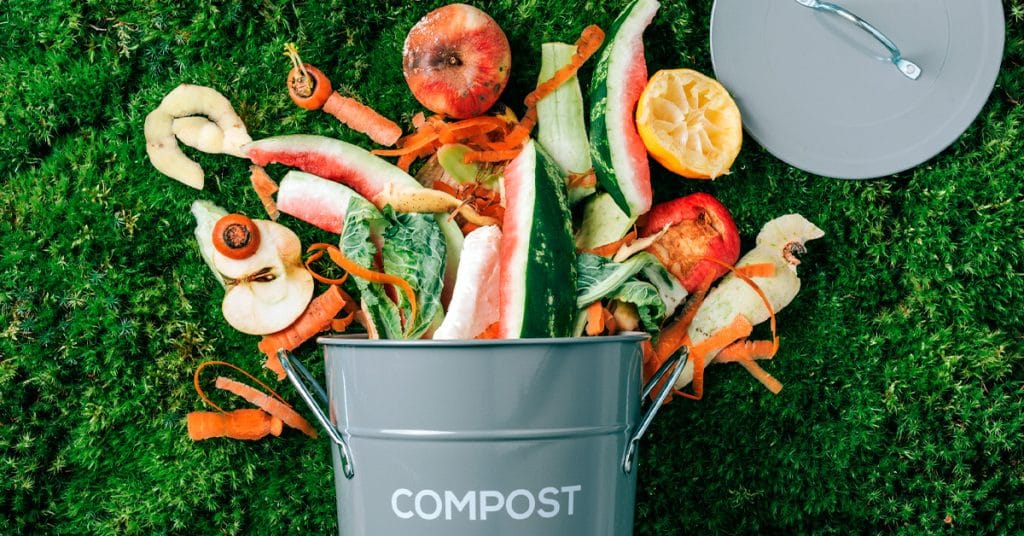All Plants and Animals Die and Decompose
In the natural world, all living beings upon dying are consumed by bacteria, insects, and other animals, yielding rich, black humus, where new plants grow, get consumed by creatures, eventually die, and the cycle of life continues.
Problem of Sending Kitchen and Garden Waste to the Landfill
Up to 60% of our landfill is yard waste, grass clippings, and kitchen refuse. Surrounded by inert materials such as cement, plastics, and metals, without air or water, organic waste has little chance to decompose, taking up valuable space for years.
Why Compost?
Composting at home turns our kitchen and garden waste into soil, avoiding the loss of precious organic resources. We can bury kitchen and yard waste in deep trenches or pile it up in a covered heap or inside a bin, then harvest rich humus in a few months.
What Should Go in the Bin?
Odds and ends of fruits and vegetables such as peels and pits, any plant refuse from the kitchen, and yard waste should go in the bin and will all render a rich, sweet-smelling compost. Add only the droppings of vegetable-eating animals to a pile hot enough to kill harmful bacteria.
What Should Not Go in the Bin?
- Keep all meat OUT of the bin — animal flesh rots with an unpleasant odor.
- Keep cheese and oil OUT of the bin — they turn rancid and retard the process.
- Keep the droppings of all meateaters like dogs or cats OUT of your bin — don’t risk parasites.
- Keep seeds OUT — they are hardy and might sprout where you do not want them.
- Keep all inorganic matter such as cement, glass, plastic, or metal OUT of the bin.
- And of course, keep any toxic material (liquid or solid) OUT of your bin.
Kitchen to Bin
Place a bowl with a loose lid by the sink for vegetable refuse, fruit peels, coffee grounds, tea bags, egg shells (if you use eggs), and house plant clippings. A container that holds 4–8 cups is large enough, so you can walk it out to the bin once a day or every other day. Remember: no oil, cheese, pizza, meat, fish, or bones.
Balance Your Compost Materials
A healthy heap should have more dry browns (carbon) than greens (nitrogen) loosely layered. Keep the proportion about 2:1. Add a layer of dry matter to the greens once a week. Examples of browns are old corn husks, autumn leaves, or dry grass clippings. Examples of greens are all plant kitchen refuse, coffee grounds, house plant clippings, and freshly cut untreated grass. The heap needs moisture and air (two things absent inside heaps at the landfill). Add a little water if it gets too dry, and poke the heap with a stick to aerate it if it gets too compact.
Although coffee grounds are brown in color, they are nitrogen rich and therefore green.
Tips and Troubleshooting
- Large twigs and matted clumps of weeds will quickly fill up your bin. It is better to allow them to decompose in an open heap on some other corner of your yard.
- A bin filled with only wet kitchen waste will decompose eventually, but since it is very nitrogen rich, it could turn into a smelly slime and tie up your bin for too long. It is best to layer it with dry, brown leaves.
- A bin filled with only brown leaves is very carbon rich. Although it also will eventually decompose, it can remain a dry, fluffy pile with little appreciable activity for a long time.
- Minor imbalances in the bin can cause a disagreeable smell or a sudden hatch of fruit flies. Correct the situation immediately; simply add some brown leaves and poke it with a stick to increase air circulation.
- If you plan to use the finished compost for an edible garden, use organic refuse for your compost. If the purpose is to dress ornamental plants, you may decide to be less strict.
Benefits of Composting and More Info
- Fall leaves decompose, adding nourishment to the soil for new plant life come spring. Do not blow them into bags. Use them to border areas of your yard. Leave the leaf litter to house cocooning moths, caterpillars, and other sleeping insects. Resist leaf blowing; it contributes to noise pollution, environmental contamination, and destruction of pollinator habitat.
- Grass clippings can decompose right where they fall, enriching the soil without artificial fertilizers.
- Take less garbage to the curb; your area trash collector might have a pick-up-on-demand program. In my area, for example, a local company charges $4 per sticker for each 30 gallon bag of trash you put out. I buy ten stickers for $40 and make them last a year.
- An increasing number of companies are offering to pick up your kitchen refuse for a fee and return it as finished compost; you may want to support them and benefit the environment simultaneously.
- Your neighborhood civic association may be holding its residents to outdated aesthetic values that block having a compost bin on the property. Become an active member and educate, engage, and be the change you want to see in the world.
- A convention that forces one to accept the chemical treatment of lawns can be changed by educating ourselves and each other on the health risks to humans and pets and on the negative effects on pollinators and their habitat. Plant a sign that reads something like this: THIS LAWN IS NOT TREATED WITH CHEMICALS TO PROTECT CHILDREN AND PETS.

